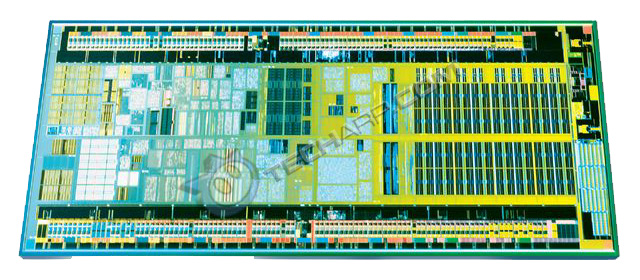Intel Atom Processor Launch
The Intel Atom microprocessor was officially launched on the first day of Computex 2008. NVIDIA had sought to dampen the Intel Atom launch by launching their competing Tegra system-on-a-chip a day earlier, but from what we could tell, Intel was totally unfazed. In fact, they did not even mention Tegra during the event. It was as if the Tegra wasn't even worth talking about...
We had earlier covered the Intel Atom in our Intel Atom Tech Report, so it is really no secret what the Intel Atom can do. Based on a new microarchitecture, the Intel Atom was designed for use in the ultra-mobile, low-cost market that is the domain of netbooks and nettops. Basically, these are small and light notebooks that can be made cheaply. Hence, the requirement for a small, low-cost processor that offers better price-performance-power ratios that are possible with current notebook processors.

According to Intel, a typical Atom-based netbook would include an Intel Atom processor N270 running at 1.6 GHz, the Mobile Intel 945GSE Express chipset with ICH7M, a 7" to 10" display, 802.11b/g WiFi support, a mini-keyboard and 256 MB to 512 MB of DDR2 memory (either 400 MHz or 533 MHz). These netbooks can run on either Linux or Windows XP Home and should come with 2-4 GB of flash-based storage with no hard drive or optical drive. This will keep the price low at around US$ 250-350.
Intel also offers the lower-end Intel Atom 230 processor and the Intel 945GC chipset for use in nettops. These SKUs will help keep the nettops at price points of US$ 199-299.
Intel Atom N270 Features
- New lead-free, halogen-free micro flip-chip package - 60% smaller than the typical notebook CPU. This allows for a slimmer and smaller form factor.
- Intel Enhanced Deeper Sleep (C4) - Saves power by flushing cache data to system memory during periods of inactivity.
- Enhanced Intel SpeedStep Technology - Multiple voltage and frequency operating points allows for better matching of performance to application demands.
- Low TDP of just 2.5W - Low thermal design power enables thinner and lighter netbooks to be created.
- Power-Optimized Front Side Bus - Minimizes power required by the FSB without impacting performance.
- Enhanced Data Prefetcher & Enhanced Register Access Manager - Anticipates data the processor is likely to need and stores the data in the processor's L2 cache, resulting in improved performance.
- Intel Advanced Smart Cache - Cache and bus design for efficient data sharing, allowing for better performance and power savings.
Intel 945GSE Express Chipset Features
- Intel Rapid Memory Power Management - Saves power by allowing all rows of the memory to be in self-refresh during C3 state.
- Intel Smart 2D Display Technology - Optimizes display frame buffer space, thus reducing memory reads and increasing performance as well as reducing power consumption.
- Intel Display Power Saving Technology - Combines backlight image adaptation and backlight modulation to enhance the displayed image while reducing power consumption.
- Intel Automatic Display Brightness - Optimizes the backlight level automatically according to the ambient light level.
- Intel Matrix Storage Manager - Link power management can reduce the power consumption of the chipset and SATA drive.
Intel Atom 230 Features
- New lead-free, halogen-free micro flip-chip package - 70% smaller than the typical notebook CPU. This allows for a slimmer and smaller form factor.
- Low TDP - Low thermal design power enables thinner and lighter netbooks to be created.
- Power-Optimized Front Side Bus - Minimizes power required by the FSB without impacting performance.
- Enhanced Data Prefetcher & Enhanced Register Access Manager - Anticipates data the processor is likely to need and stores the data in the processor's L2 cache, resulting in improved performance.
- Intel Advanced Smart Cache - Cache and bus design for efficient data sharing, allowing for better performance and power savings.
Intel 945GC Chipset Features
- Intel Graphics Media Accelerator - Integrated graphics solution for lower power consumption than discrete graphics solutions.
- Intel High Definition Audio - Integrated audio support enables home theater sound and even delivers advanced features like multiple audio streams and jack retasking.
- PCI Express x 1 Interface - Offers up to 3.5X better bandwidth than the PCI bus. Supports the LPC serial interface, ExpressCard and mini-card.
Page |
Topics |
|
1 |
||
2 |
||
3 |
||
4 |
||
5 |
||
6 |
||
7 |
||
8 |
||
9 |
||
10 |
||
11 |
||
12 |
||
13 |
||
14 |
Coming soon! |
|
15 |
Coming soon! |
|
16 |
Coming soon! |
<<< ASUS Eee PC 901/1000 Series Launch : Previous Page | Next Page : Intel Atom Netbooks & Nettops >>>







 Add to Reddit
Add to Reddit
